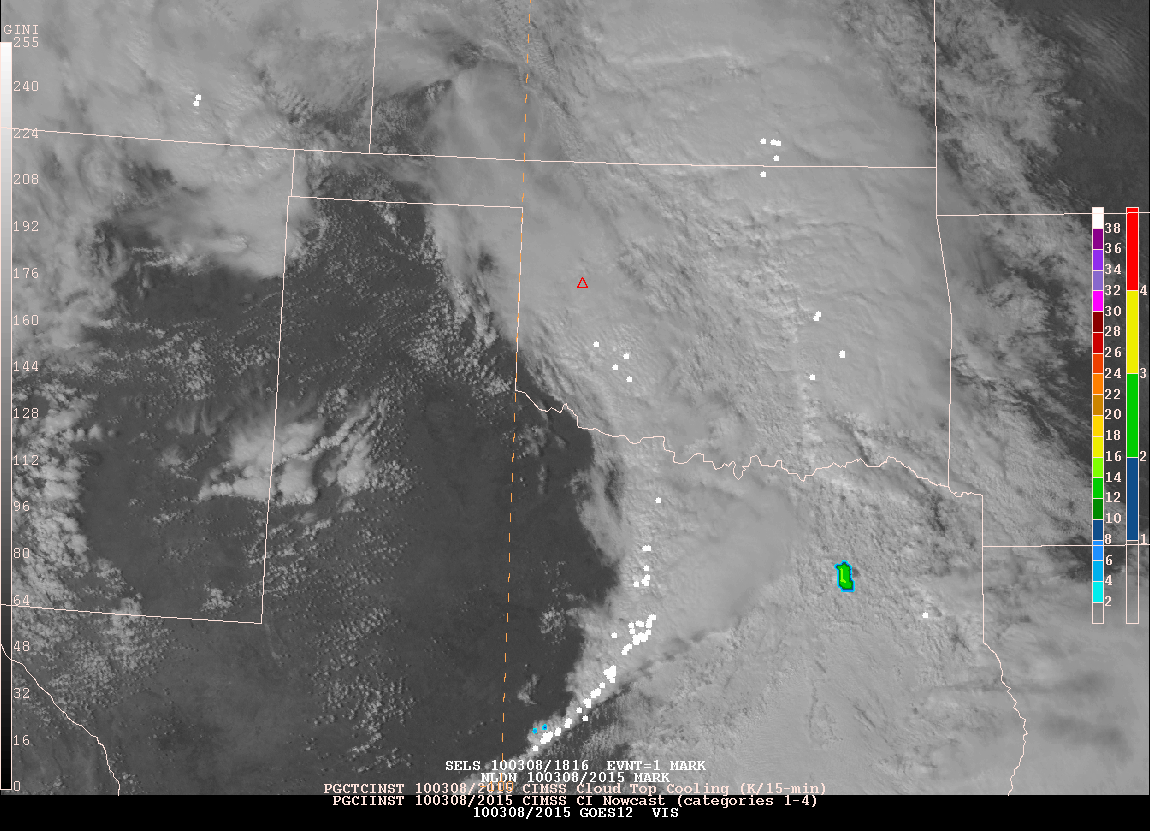Detection of convective initiation and the first tornado in March
After an unusually quiet February tornado-wise in the United States (only one tornado was reported, an EF-0 in California that lasted for 3 minutes late in the day on February 27th), two tornadoes touched down near sunset in western Oklahoma, near the town of Hammon. The above animation from NAWIPS shows 1-km GOES-12 visible imagery with superimposed contours of cloud-top cooling (and lightning strikes) from about 2000 UTC on 9 March to 0015 UTC on the 10th, shortly after tornado touchdown (the tornado location is indicated by the red triangle in the animation). The growing cell that will ultimately spawn the tornado is correctly identified. Such cloud-top cooling is computed routinely as part of a University of Wisconsin Cooperative Institute for Meteorological Satellite Studies (CIMSS) project on convective initiation. The algorithm locks on to the convective cell that spawns the tornado, and not adjacent cells. The strongest cooling was associated with the storm that produced the tornado.
If the detected cloud-top cooling is co-located with changes in cloud phase (for example, from supercooled water droplets to ice crystals, or from all water droplets to supercooled water droplets) as inferred from GOES-12 radiances for different infrared channels, then convective initiation is deemed to be ongoing. In this animation of 11-micron cloud temperatures overlain with Convective Initiation, note the CI Likely at 2132 UTC along the Texas/Oklahoma border. Note that only the nascent cell that subsequently produces a tornado is identified, as only that cell contains the required strong cooling and the phase changes. That region of cloud top cooling and phase change then moves north-northeastward as the convective cell that spawned the tornado develops. Convective Initiation is no longer indicated, however, because the initiation stage of convection is over by 2200 UTC.
(Added: CNN has Andy Gabrielson’s too-close-for-comfort video).
(Added: Another video, from YouTube).
(One more Addition: Write up on the tornadic event from the Norman, OK office of the National Weather Service).


